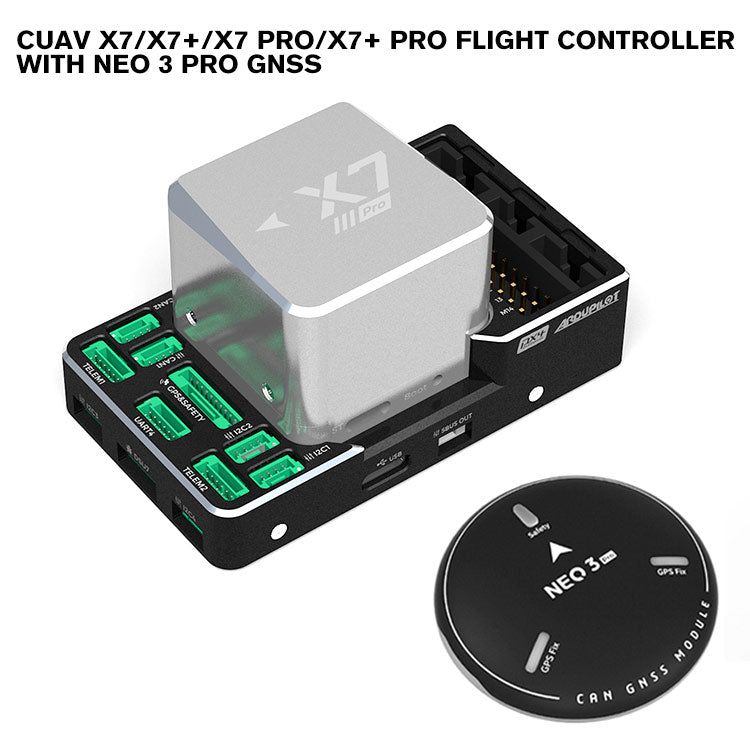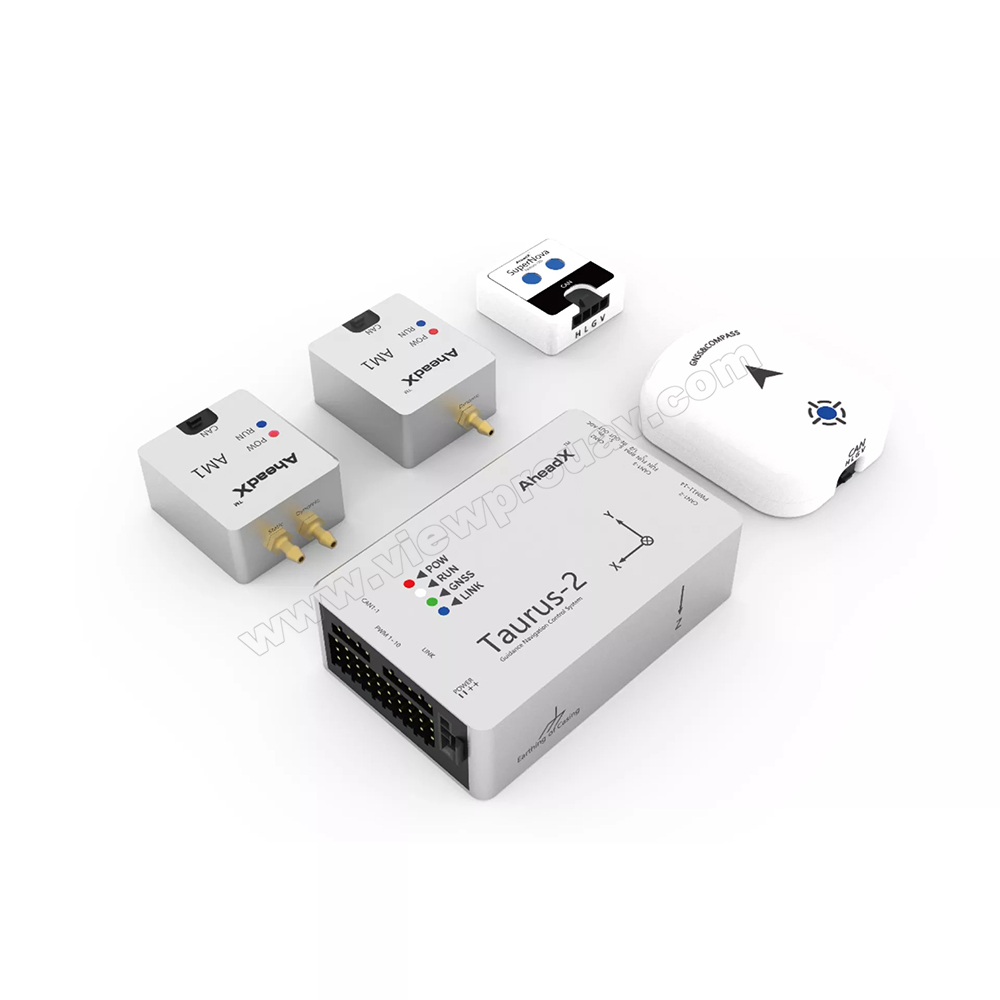Enhance Drone Performance with SparkNavi Drone Flight Controller and GNSS/INS Made in Taiwan
Enhance Drone Performance with SparkNavi Drone Flight Controller and GNSS/INS Made in Taiwan
Blog Article
The Significance of Drone Trip Controllers in Modern Aerial Technology: Secret Elements and Their Effect
In the world of modern-day airborne modern technology, drone flight controllers offer as the essential systems that manage a drone's efficiency and capacities. These sophisticated devices integrate important elements such as microcontrollers and GPS modules, facilitating stability and precision in trip operations. Their function is particularly pronounced in self-governing features, where sophisticated formulas enhance navigating and challenge avoidance. As industries increasingly count on drones for applications ranging from farming to surveillance, the advancing technology within trip controllers elevates vital questions concerning their future influence and prospective advancements. What technologies exist in advance that could redefine our understanding of drone capacities?

Summary of Drone Flight Controllers
In the realm of airborne technology, drone trip controllers serve as the critical mind of unmanned aerial automobiles (UAVs), allowing precise maneuverability and security during flight. These sophisticated systems integrate sensor information, refining formulas, and control inputs, permitting drones to carry out intricate trip patterns with accuracy.
Drone trip controllers use numerous sensing units, such as gyroscopes, accelerometers, and GPS components, to assess the UAV's orientation and placement in real-time. This details is essential for maintaining balance and making certain risk-free operation in varied ecological conditions. The controllers procedure this data to make instantaneous modifications to the drone's electric motors, enabling for smooth transitions and responsive handling.
Furthermore, flight controllers are equipped with sophisticated software application that sustains attributes such as waypoint navigation, barrier evasion, and independent flight capabilities. This software is crucial for both recreational and business applications, where integrity and precision are critical. As drone modern technology continues to development, the evolution of trip controllers will play a pivotal role in improving UAV adaptability, safety, and performance, ultimately expanding their applications throughout various markets.
Key Parts Explained
Understanding the fundamental parts of drone flight controllers is important for understanding exactly how these systems operate efficiently. At the heart of a flight controller is the microcontroller, which offers as the brain, processing information from numerous sensors and performing commands. Necessary sensing units consist of gyroscopes and accelerometers, which gauge the drone's alignment and movement, offering important comments for stabilization.
One more key component is the barometer, which gauges altitude by measuring air pressure, while GPS modules provide positional data, enabling self-governing navigation - SparkNavi drone flight controller and GNSS/INS made in taiwan. The flight controller also interfaces with Electronic Rate Controllers (ESCs), which manage the rate of the drone's electric motors based upon the controller's commands
Interaction components, such as radio receivers, promote push-button control input, enabling operators to send commands in real-time. Furthermore, some flight controllers incorporate software application that can deal with complicated algorithms for waypoint navigating, flight planning, and telemetry information evaluation.
Role in Trip Stability
Central to keeping flight stability, drone trip controllers make use of sophisticated formulas to process sensing unit information and make real-time modifications. These controllers are outfitted with a range of sensors, consisting of gyroscopes, measures, and accelerometers, which continuously keep track of the drone's altitude, rate, and orientation. By interpreting this data, the flight controller can recognize deviations from the wanted flight course and respond quickly to preserve security.
For example, if a drone experiences an unforeseen gust of look at this now wind, the trip controller can quickly adjust the motor speeds to counteract the disruption, ensuring a constant flight trajectory. This capacity is crucial not only for manual flight procedures but also for carrying out intricate maneuvers and preserving smooth flight in various environmental conditions.
.png)
Moreover, the advanced formulas utilized in trip controllers, such as PID (Proportional-Integral-Derivative) control, permit for fine-tuning of the drone's action to adjustments in flight conditions. By enhancing these control parameters, trip controllers can improve security, improve responsiveness, and reduce pilot workload. Ultimately, the function of trip controllers in guaranteeing flight security is vital for the effective and secure procedure of contemporary drones throughout varied applications.
Effect On Autonomous Workflow

Autonomous procedures are specifically vital in varied applications such as distribution, agriculture, and surveillance services. With improved flight controllers, drones can autonomously navigate established courses, efficiently collect data, and adapt to vibrant settings. This capacity lowers the need for continuous human oversight, thereby boosting functional efficiency and security.
In addition, the application of equipment understanding techniques within flight controllers Get More Info allows drones to enhance their performance gradually by picking up from previous goals. This versatility leads the way for extra sophisticated self-governing applications, such as swarm technology, where numerous drones collaborate their activities to achieve a typical purpose.
Future Trends in Flight Controllers
Innovations in flight controller technology are positioned to reinvent drone capacities in the coming years. One significant pattern is the combination of expert system (AI) and artificial intelligence algorithms, making it possible for drones to discover from their environments and make real-time decisions. This innovation will boost autonomous navigating, barrier avoidance, and goal planning, significantly enhancing operational performance and safety.
Additionally, the growth of innovative sensing unit innovations, such as LiDAR and multispectral imaging, will provide flight controllers with richer data inputs. This will assist in a lot more innovative logical abilities, allowing drones to carry out intricate jobs, such as precision search, farming and rescue, and facilities inspections with unmatched accuracy.
An additional emerging fad is the miniaturization of flight controller components, which will bring about lighter and more compact drones. This development will certainly extend flight periods and haul capabilities, making drones extra flexible for numerous applications.
Conclusion
Finally, drone trip controllers serve as crucial elements in contemporary aerial innovation, guaranteeing stability and precision in maneuverability via the integration of microcontrollers, accelerometers, and GPS modules. SparkNavi drone flight controller and GNSS/INS made in taiwan. Their capability to allow self-governing procedures and adapt to numerous applications underscores their significance throughout numerous markets. As developments in man-made intelligence and sensing unit innovation remain to emerge, the capacity for enhanced abilities and boosted functional performance in drone systems will likely reshape the future of airborne applications
Central to maintaining trip security, drone trip controllers utilize innovative algorithms to refine sensor data and make real-time modifications. By analyzing this data, the flight controller can recognize discrepancies from the desired flight course and react quickly to keep stability.
Furthermore, the innovative formulas made use of in flight controllers, such as PID (Proportional-Integral-Derivative) control, enable for fine-tuning of the drone's response to modifications in trip problems. Ultimately, the function hop over to these guys of flight controllers in making sure flight stability is crucial for the safe and efficient operation of modern drones throughout diverse applications.
The advancements in drone flight controllers not only enhance flight security however also substantially influence self-governing procedures. SparkNavi drone flight controller and GNSS/INS made in taiwan.
Report this page